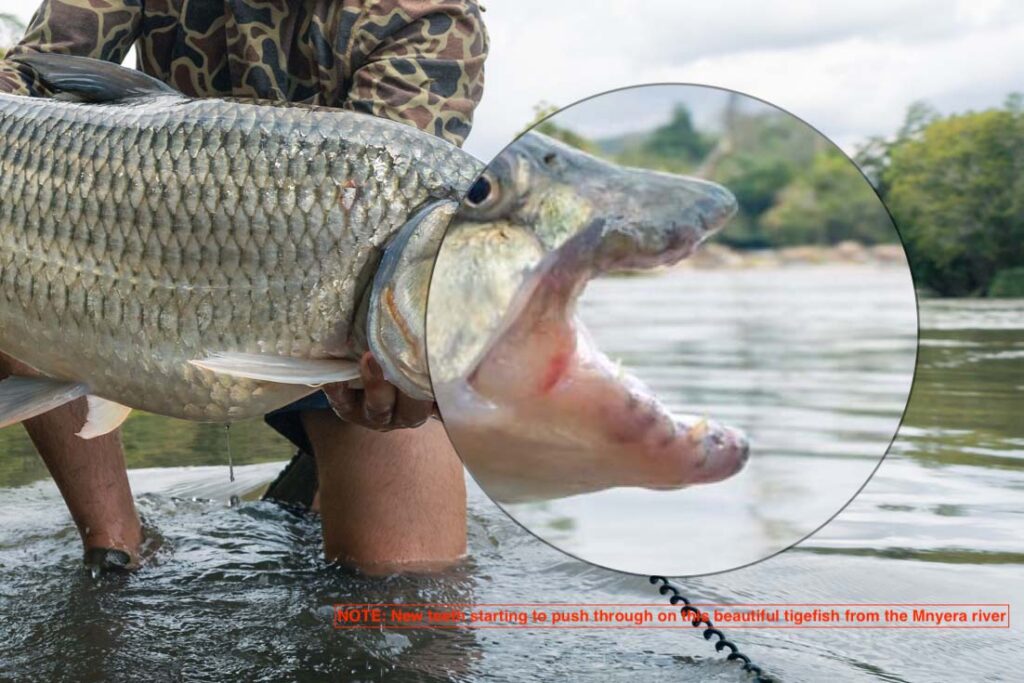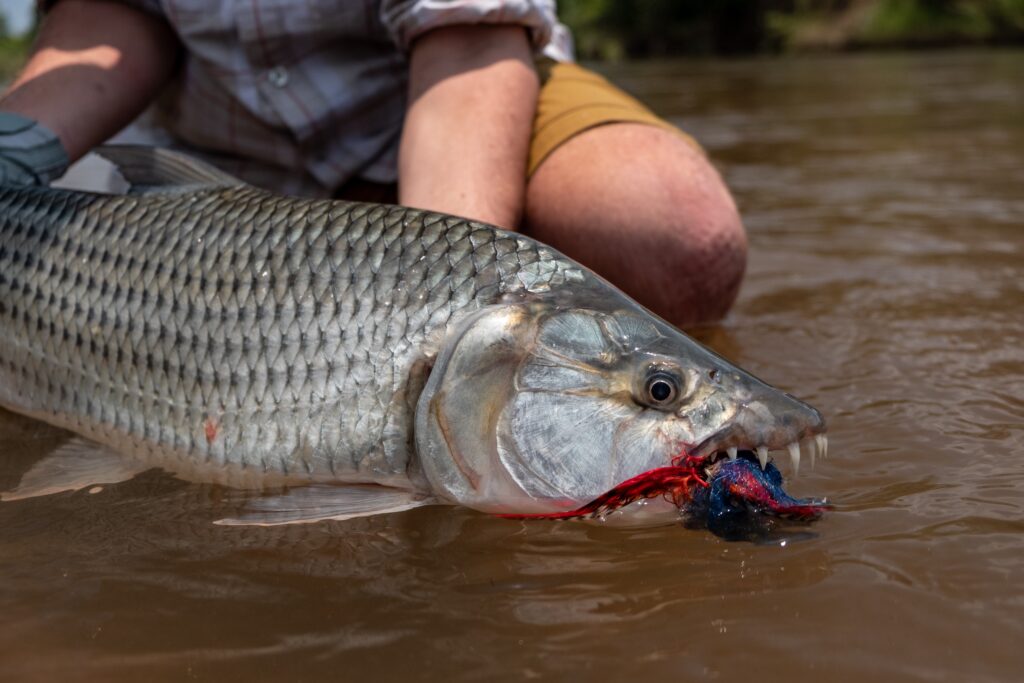Tigerfish Teeth
Did you know tigerfish teeth are not replaced one by one, but in complete sets along one side of the jaw?
A study by C.S. van der Waal and M.S. Bills (2010), Tooth replacement of tigerfish Hydrocynus vittatus from the Kruger National Park, revealed that when it’s time for new teeth, a whole row is shed and replaced at once. This ensures there are no gaps that could affect their strike. The result is a predator that always has a fully functional, razor-sharp bite.
Why This Adaptation Matters
Tigerfish rely on speed and accuracy when ambushing shoals of prey. By replacing entire sets of teeth at a time, they maintain peak efficiency without losing hunting ability. For anglers, this explains why leaders often come back shredded — the teeth are always sharp and aligned.
A Predator Built for Performance
This unusual replacement system highlights an evolutionary solution designed for constant performance. With their bite always at full strength, tigerfish remain one of Africa’s most formidable freshwater predators.
Want to dive deeper into the science? You can read the full paper here: Tooth replacement of tigerfish Hydrocynus vittatus from the Kruger National Park.
Stay curious about the species you pursue — understanding them makes every encounter on the water that much richer.
Get in touch if you have any more questions by clicking here.





